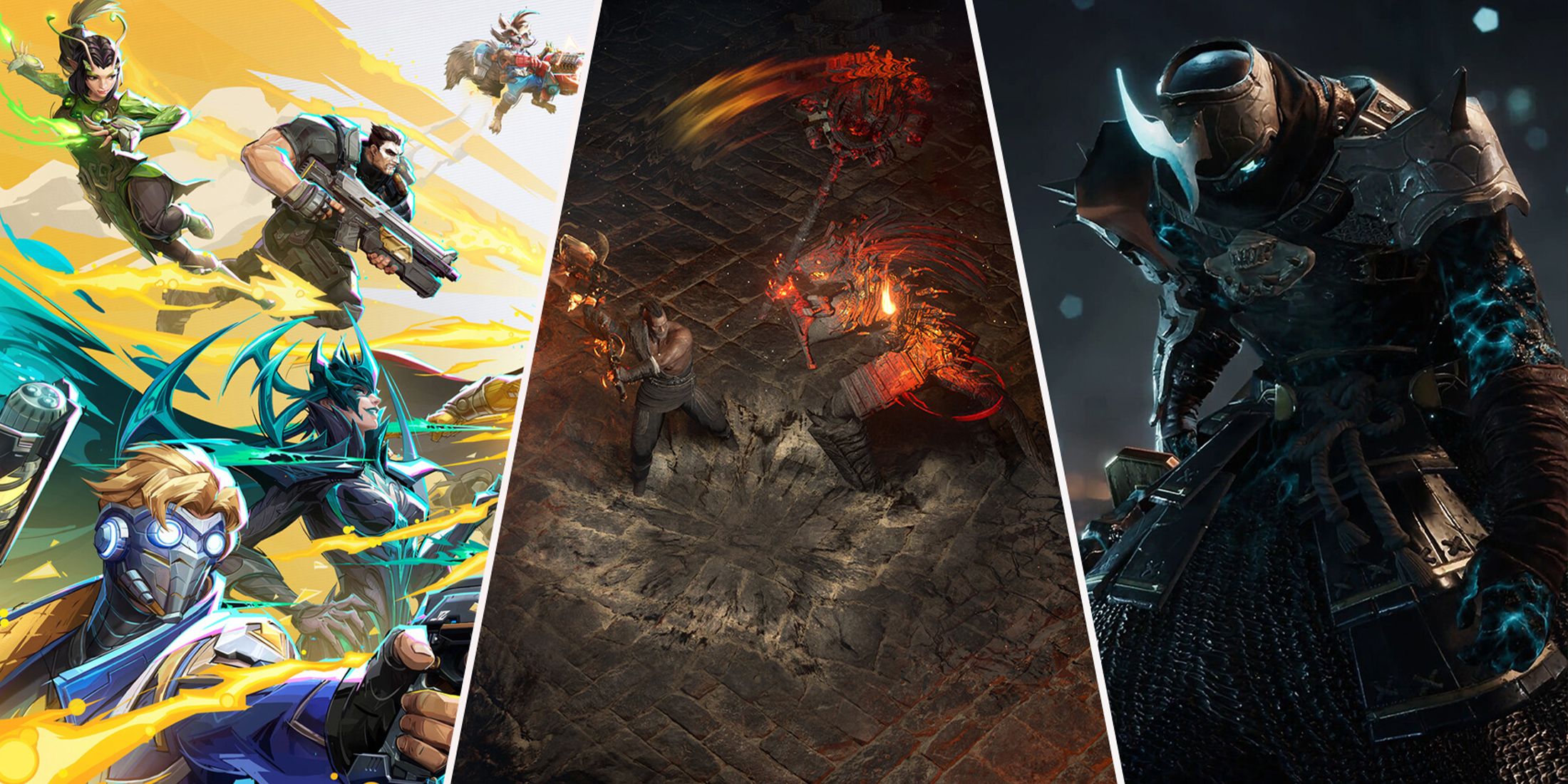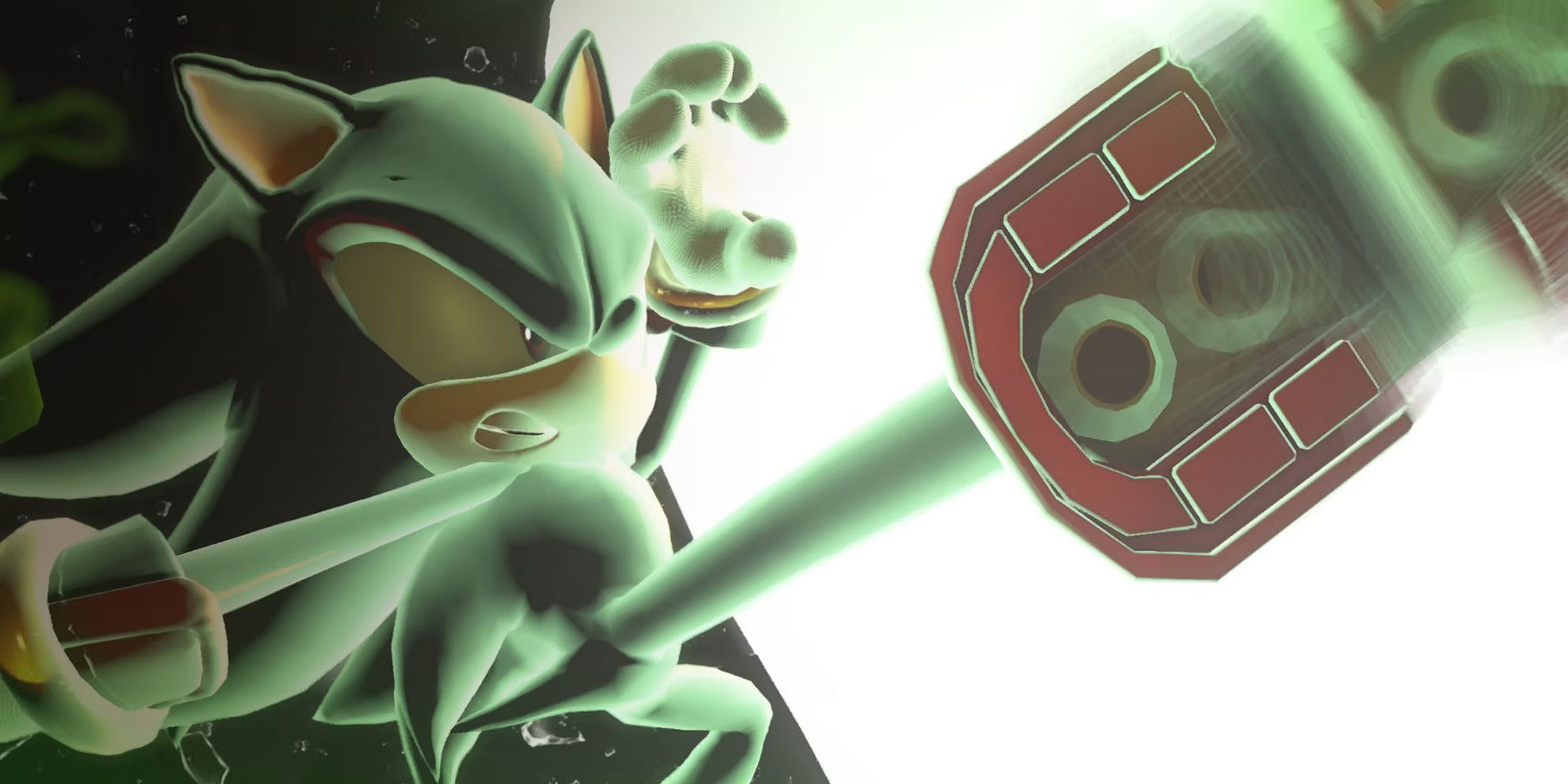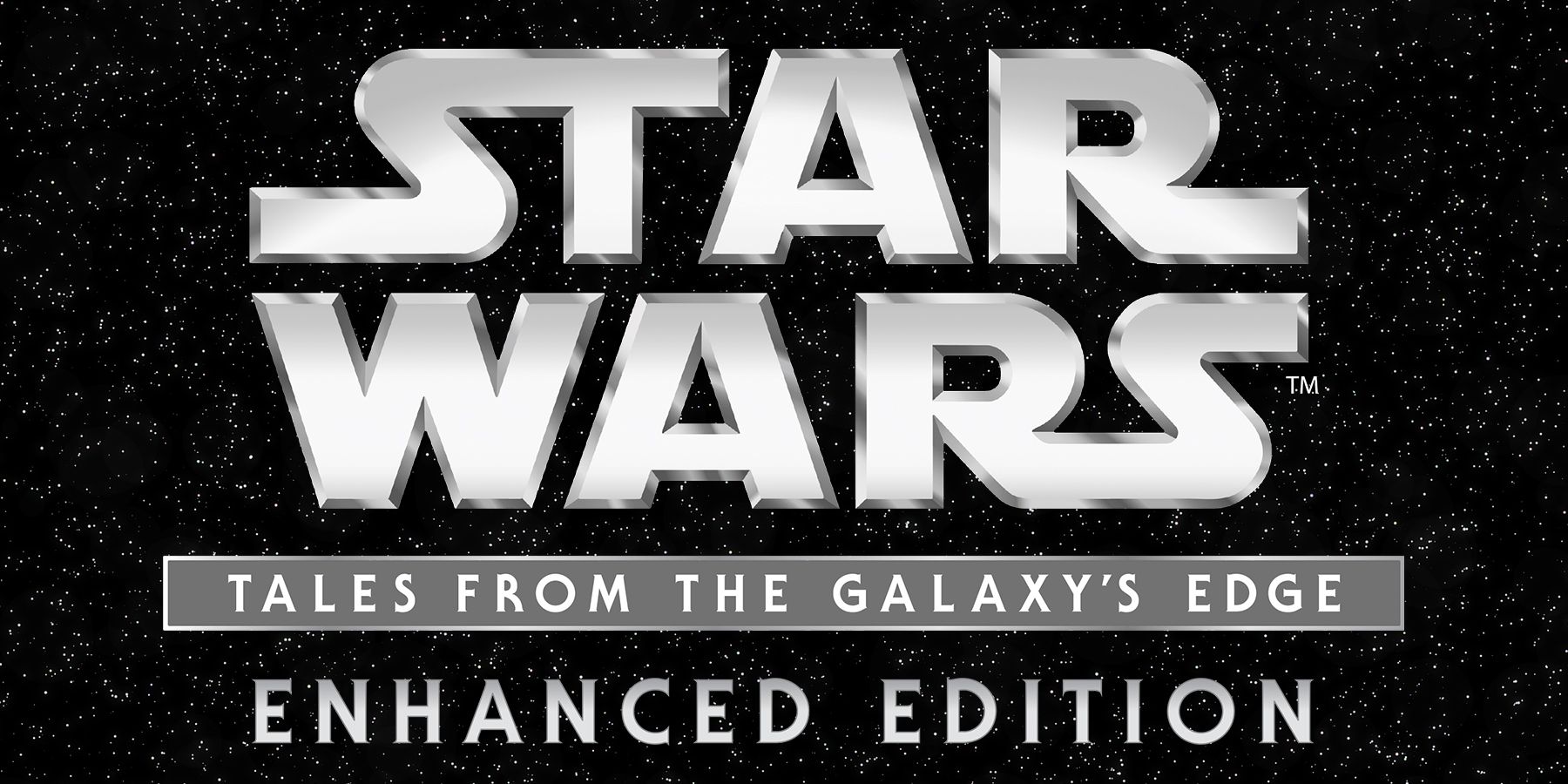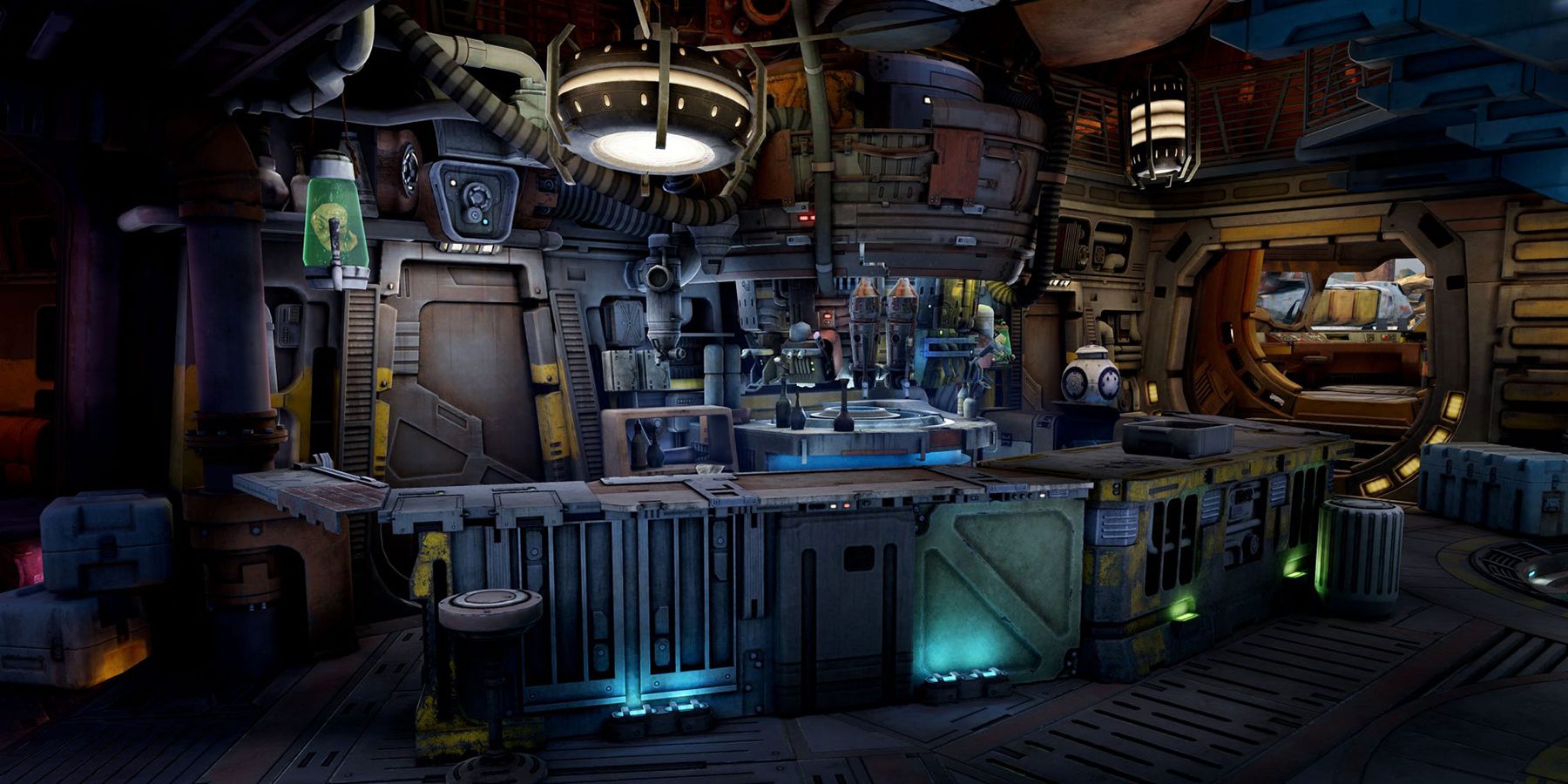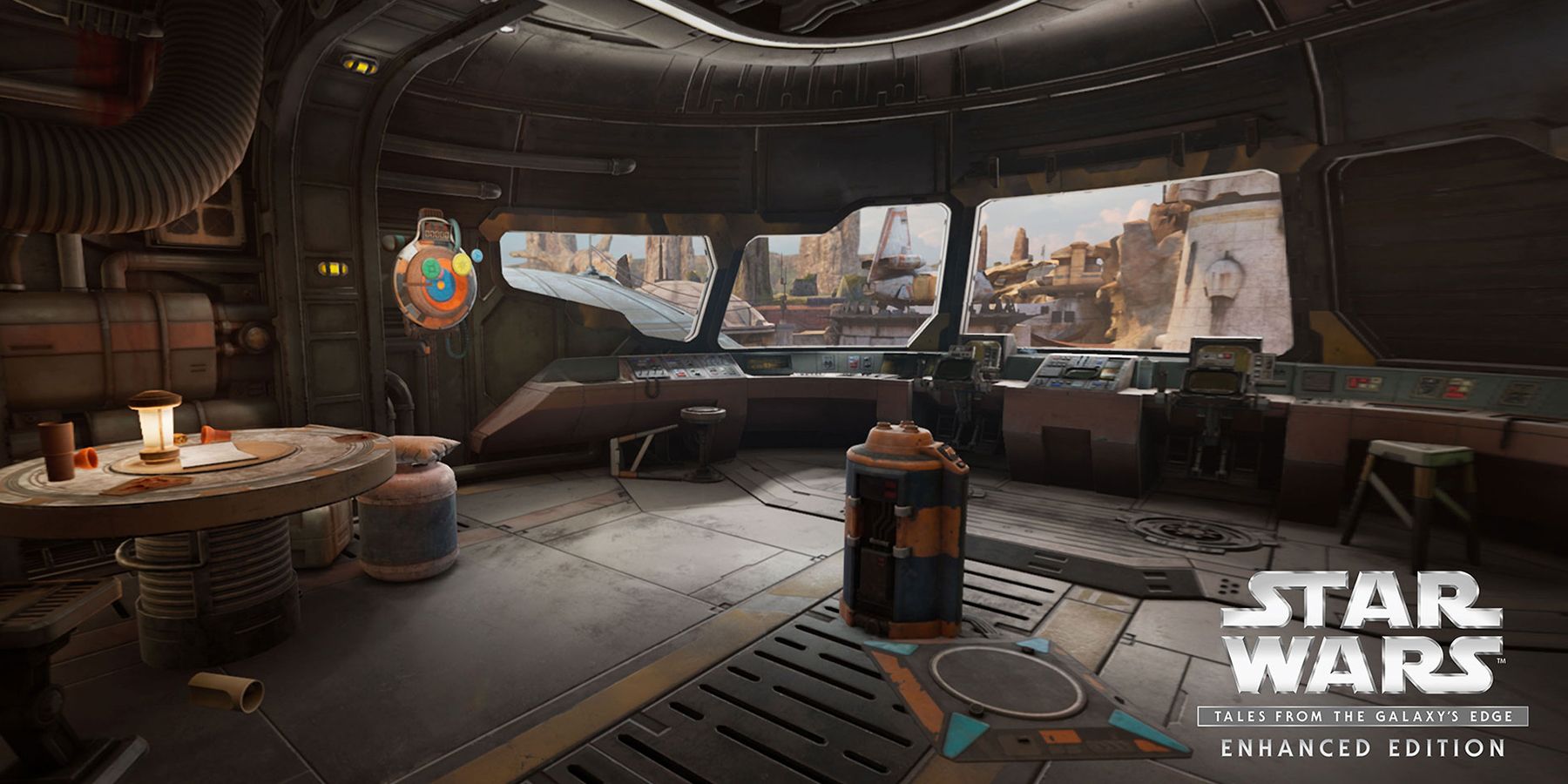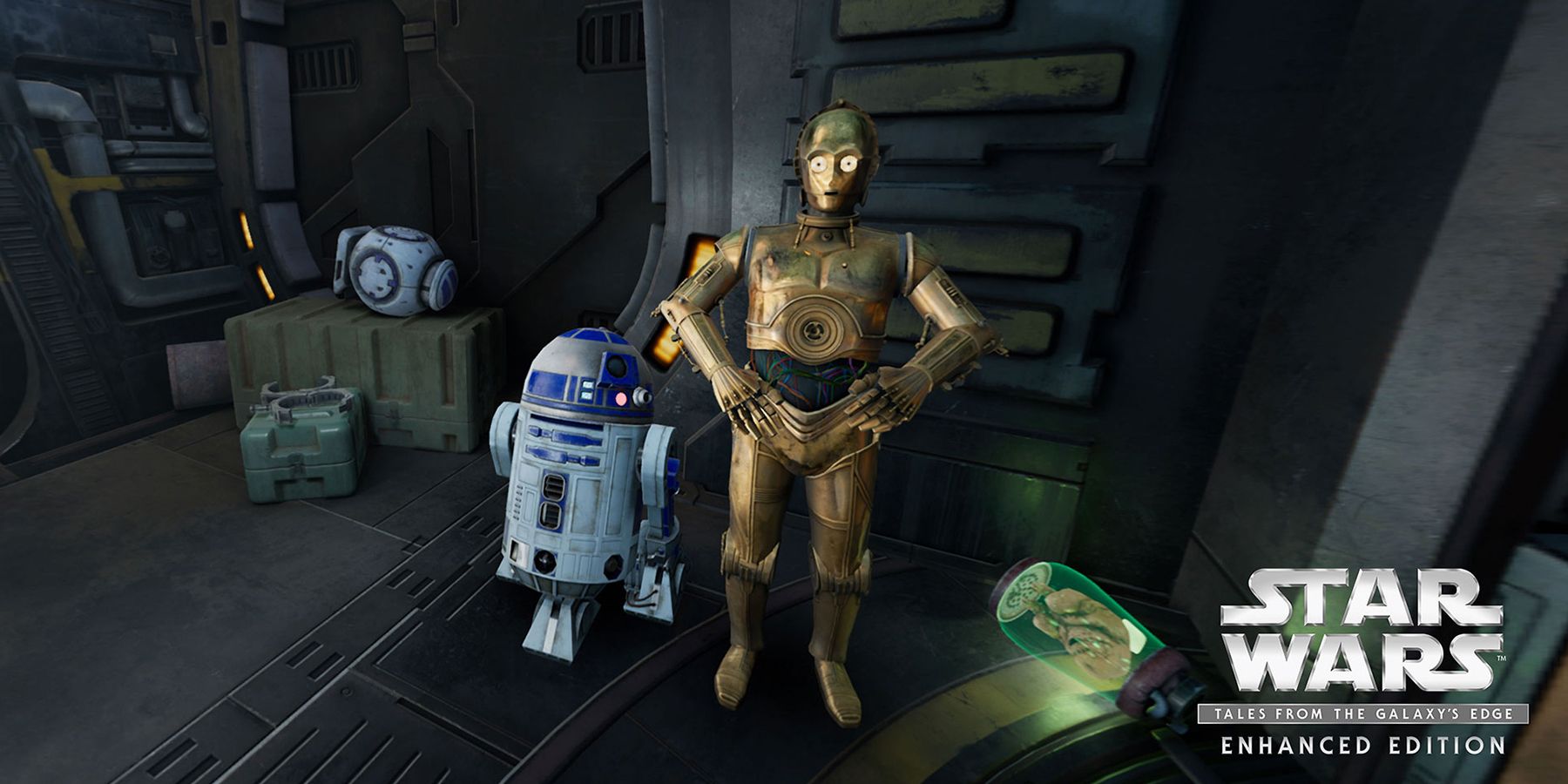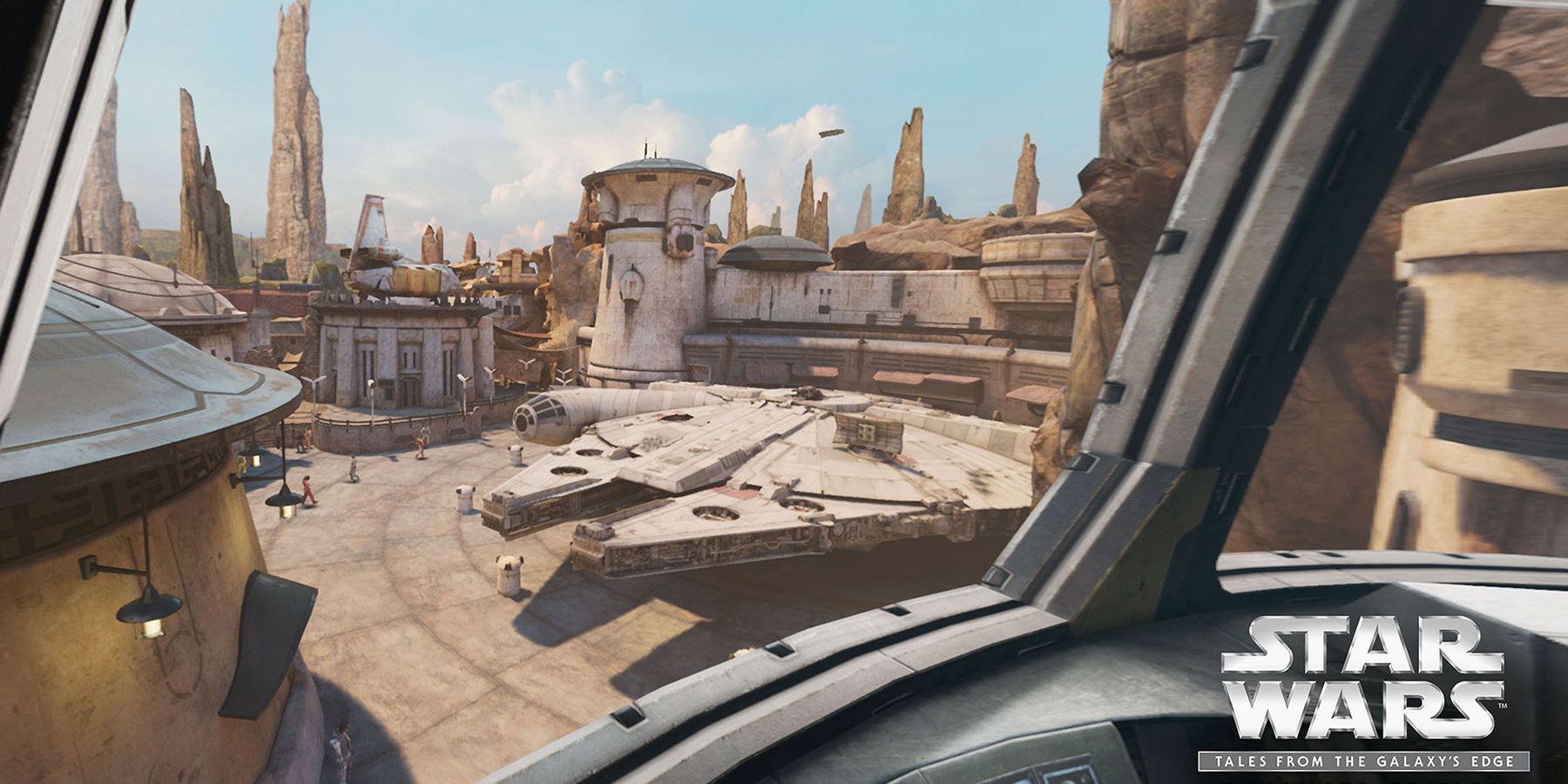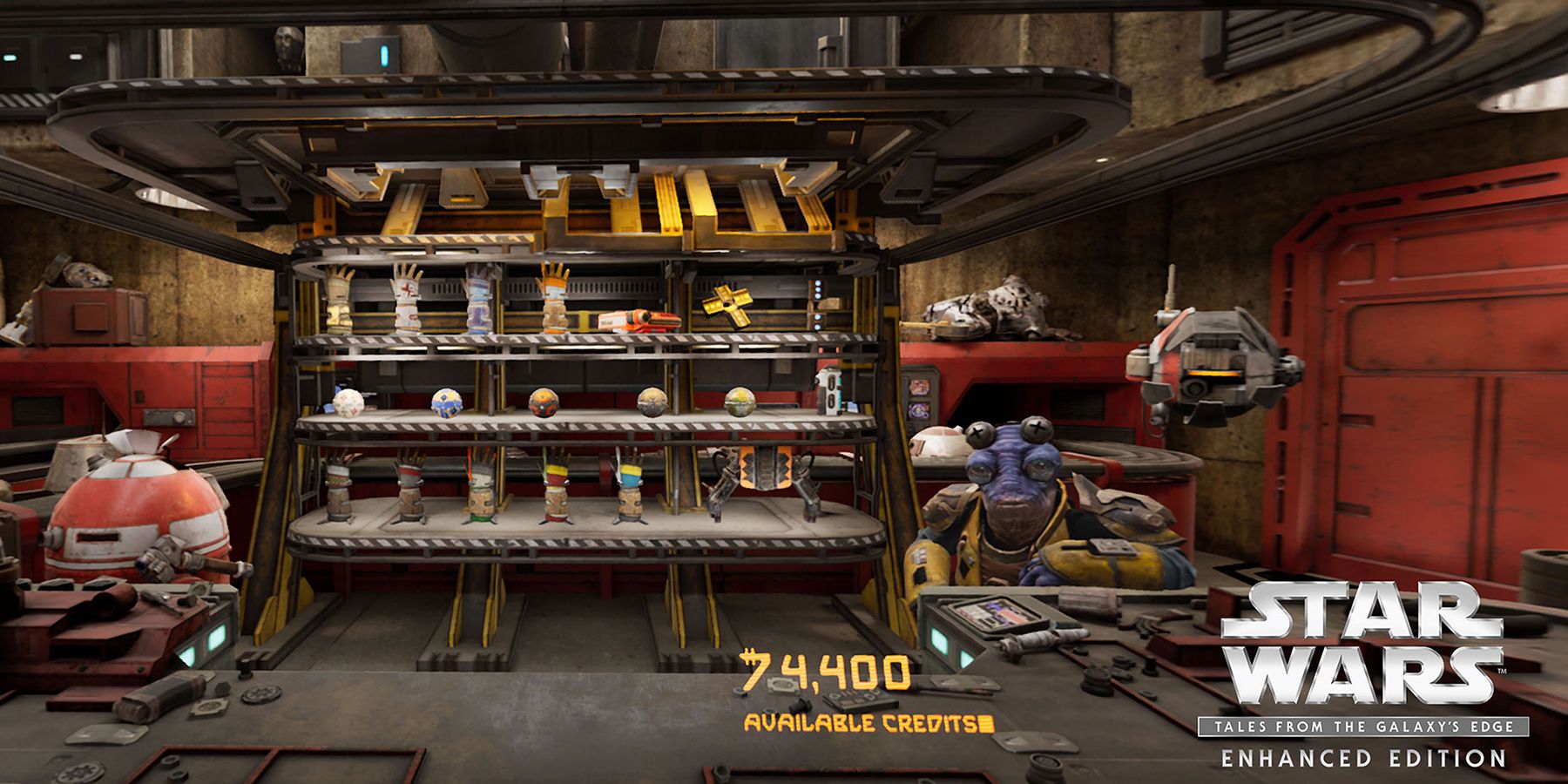ILMxLAB's Star Wars: Tales from the Galaxy's Edge - Enhanced Edition is a reimagining of the hit 2020 Star Wars VR title for the Oculus Quest system. The enhanced edition takes advantage of the PSVR 2's unique hardware capabilities and improved performance, allowing for an incredible leap in visual fidelity, immersion, and haptic feedback that come together to bring players closer than ever to the Star Wars universe.
Game ZXC recently spoke with Jose Perez III, Director at ILMxLAB, and Jacob Edelen, the game's Experience Design Lead, about the development process behind the Enhanced Edition. They spoke in depth about the various improvements coming with the Enhanced Edition, the challenges involved in its creation, and how they utilized the PSVR 2's hardware to upgrade the game in every way. The following transcript has been edited for clarity and brevity.
Q: What has been each of your favorite parts of developing Star Wars: Tales from the Galaxy's Edge?
Edelen: My favorite part of developing this game was the new haptic system that we got to implement. I'm really big on immersive stuff like vibrations that really put you into the game and make you feel like you're really there. With what we were able to use with PSVR 2, the haptic system made it so that we could make things feel really individualistic. Whenever you picked up something different, it feels different when you use it, like different blasters, the All-Kit, or even thermal detonators, they all feel personalized in a really subtle way. So that was my favorite part: making them feel really authentic to the item that they were.
Perez: I love the fact that the story is all combined together; there's no downloading or anything like that. You have everything there that you want. Through the power of the hardware -- you never quite make it all the way to the vision that you want -- but this I think got us a significant step closer. The visual fidelity looks amazing, all the gadgets and weapons feel cooler, and I still love the story.
Q: Can you talk about some of the improvements that were made specifically with the PSVR 2's capabilities in mind?
Perez: On the visual side of it was that you "turn on all the lights." There are a lot of dynamic lights and real-time lighting going on, and the characters are self-shadowed. So when Seezelslak walks up to the bar, you see him walk into this cone of light and walk through all this stuff. That just makes it look gorgeous. Blaster bolts have dynamic lights on them, so you'll be shooting in a hallway, and you'll see these blaster bolts go flying by and reflecting off Stormtrooper helmets and stuff. The visual fidelity is definitely a giant, a giant step up.
The previous Tales was split into two pieces, and this has both of them combined. When you do that, the story actually can overlap pretty significantly. If you start to go out into the wild and fight the Guavian Death Gang, and be like "Oh, never mind, I want to go back to the bar and get a drink," you can do that. You might bump into Dok-Ondar. At that point, the other stories can open up, which means it makes it more of an opt-in experience.
And then like Jake was saying about the haptics, he went crazy on that stuff and just spent all this time refining the haptics on every single weapon and gadget. This was all in concert with the audio team, who does a lot of work to get the haptics to work that way. They did a huge amount of audio, too, so it's an enhanced edition of the experience in all ways.
Q: Were there any particular challenges you faced translating the game from the Quest to PSVR 2?
Perez: There's always going to be different challenges because it's different hardware. Everything that we were doing on Quest -- which is also a great piece of hardware, but very different from a fidelity perspective -- was really about focusing on performance and figuring out how we could get that to really shine. On this one, it was how to get these super high res models that we already created for the previous game which we had to bring to a lower res to make work now back to a higher res.
Edelen: One of the biggest challenges is when you get a new piece of hardware is you're wondering what direction to take things in and how much more you can scale things up in terms of resolution. But when you start to throw it in there, it's not really as simple as "Let's just make everything look better. Let's put reflective surfaces on it. Let's put dynamic lights in there."
You start to realize you've run out of room, and you have to scale back and think about the frame rate, think about those areas that you're really breathing new life into and making them more consistent, especially with the original version. How do you keep the heart and soul of the original while going on to this new piece of hardware, the new things that are afforded to you in terms of both the rendering capabilities and the haptic system, all these things that we're handling at once and how you're able to make it run as smoothly as you'd like it to.
Q: Were there any limitations developing for the Quest that haven't been an issue on PSVR 2?
Perez: There's always going to be some limitations in any form, which isn't a bad thing. It's actually really good for design and makes sure we have to work. But again, with lighting, it was like, "Turn everything on!" It's like they say, it's all about the lighting. It's amazing, the amount of atmosphere and the greater sense of reality you get when you do that. So that was probably the most obvious. Even the models are amazing. They've really been up-rezzed, but the lighting side of it was crazy.
On the "feel" side, there is haptics in the headset, and that's a very weird, bizarre new experiential part of this. It's a bigger deal than you would expect until you have a blaster bolt whiz by your head, and you feel a little vibration.
Edelen: As Jose mentioned, limitations are often a really good thing. It's different depending on what headset and what technology you're working with. You work with Quest, and you make it as good and as specific as possible to that headset, and then you get this new different hardware that you're working with and wonder how do we make it really feel good and authentic to this new hardware that we're working with?
Getting haptics in the headset does open up new avenues like, when you first start up the game, you place something on your head, and suddenly this visor puts a little bit of rumble in your head. When you take damage from enemies in the game, you're getting different vibrations and stuff in areas that you didn't have on the Quest originally. So yeah, there are always going to be challenges, but it's the same with really whatever technology you're working with.
Q: What are you most excited for players to experience?
Perez: I'm excited for the people that have played through it before and the new people to play through it. If you're new to it, I really do think this is probably the most complete-to-the-vision experience that we've got, and you'll get that whole story. I'm really proud of the story of a found family and Jedi stories about patience and growth, and really digging into all the Star Wars nerd stuff. I think we made a really quality Star Wars story there.
For the people that might have played it on the previous headset, you're going to have all these new enhancements and I guarantee you, you're going to see things you didn't see if you've only played it once. It's a very open game. There are more jokes in there than you can see in a couple of hours. So if you played it before, I guarantee you're going to see some new things if you play through it again.
Q: What aspect of the game would you say has seen the most significant improvement?
Edelen: I say the environments honestly. There are some spots that you go into, like with the darker environments, you'll see them really start to pop more with blaster bolts whizzing everywhere, the dynamic lights change up those areas that you're in, as well as going to certain areas -- like we've got this Hissiq Springs acid pool area where there are reflective surfaces on the acid pools now.
It looks really different, and the environments really start to pop more especially with the Jedi Temple and different areas like the First Order facility. The reflective surfaces make a really big difference in terms of it looking more like you're in your own Star Wars story and universe. Things just look a lot more clear, and you can see things off in the distance more clearly looking down iron sights.
Q: This is likely going to be the first VR game for a lot of PSVR 2 adopters. How do you go about making the game accessible to people just getting their VR legs?
Perez:Star Wars is for everybody. I like to keep that in our hearts when we do this. We want everybody to get to play in this world and hear these stories and take it take a piece of it with them. Every project that we start, regardless of the other projects that we've created, we still try to look at it from the perspective of somebody that's stepping into this for the first time, knowing that you're going to put on the headset, and if it's your first time, you're going to go, "Boom!" You're gonna kind of go dumb for a second while you're like "I can see my hands!" so we try to take a lot of that into consideration and give you a nice slow ease into the experience.
In addition to that, we think a lot about accessibility at ILMxLAB and at Lucasfilm in general, so we put a lot of work into accessibility options. If you pop open that menu and you dig through it, we've got all the things in there from your snap turns to your "play seated or standing" options, do you want to have teleport or no teleport, we have a way to move your body up or down or away from you based on body shape. Anything that you might not like such as haptics, you can turn the haptics off.
Again, Star Wars is for everybody. So when we make a project, we try to introduce you to the world as if you've never been there before. Star Wars always kind of does this anyway, it dumps you somewhere in the middle like "What's going on?" and then you figure it out.
Edelen: I think that one of the great things about ILMxLAB projects is that we really bring intuitiveness into it, so that anybody can play one of these experiences and not get lost or totally confused in terms of how they're going to handle it. Because you're right, VR can be really overwhelming to people for the first time. Keeping that in mind is important as we develop these kinds of experiences.
I think the other thing is, we've got a really diverse set of people working on these. There are some people who are really great at VR, where they're able to do smooth movement for the environments, but we've also got other people on the team that may not be able to handle that. Keeping that in mind and having different people on the team with their different voices makes it so that accessibility is a really big and important thing for us as we develop something like this.
Q: Has player feedback from the original release been a factor in the Enhanced Edition's development?
Perez: I think so. We're always listening to what people are saying, even between the two parts of the first version, before we combined it all for the Enhanced Edition. We were already making adjustments based on the feedback that we were hearing there with the hover pack and all of that.
There was definitely listening to feedback, and trying to make sure that the experience is more open from the beginning. So you feel like the credits that you're earning, you have reason to spend it early on and not have to wait a couple of hours before you spend them and instead can go in and start purchasing things and changing up the gameplay early on.
I think if you're making anything that is interactive, you should be listening to what people are saying out there because somebody is going to do it differently than you, and it might not be the same experience.
Q: As the game is branching into other platforms, are there any plans for a PCVR version?
Perez: I would never say never because I want as many people to play this as possible, but right now, this is the place to get the best version of it. It's exclusive, and it's going to be like that for quite some time. We're not making anything for this on PC at the moment. So this is definitely the place to get it.
Q: Any closing thoughts you'd like to share with our readers?
Edelen: The really exciting thing about this experience is the variety that you're going to find in this, unlike other Star Wars experiences. For this one, you can take on the role of multiple different kinds of characters like this droid repair tech who's taking a bunch of odd jobs on Batuu and fighting the Guavian Death Gang, taking on the role of IG-88 in one of Seezelslak's tales to hunt down a bounty, or becoming a Jedi to interact with characters like Yoda and going through ancient Jedi temples and even training a Padawan.
There's just a really big depth of things that you can do in this game. And I'm really excited for people who haven't experienced that before to see it for the first time, and for the people who have played the original to see just how much it's changed.
Perez: I would agree with all of that. I would also add, I think one of the really special things about this project is how it's connected to the theme park and to Galaxy's Edge, and how closely we worked with all those folks. If you liked the stories and cared about them and you go to the parks, you'll realize that this is all one story.
We might show Mubo first here, but he owns the Droid Depot and he has a crush on Bina, who works in the Creature Shop, and "What's Hondo doing with the Falcon?" and it's all tied in. So to me, I think that's where there's something special about it, when you do both. If you check out Galaxy's Edge in the parks, and you try this, I think you're going to have an even greater experience. Taking that one extra step of looking at how these experiences are connected -- not from a marketing way but from a story way -- I think is super exciting.
Edelen: Also, playing this for the first time, you may encounter things in the parks you haven't seen, like, for example, a Ronto Wrap. We have that, and it's an actual food item in the park. When I tried that out, it was the most delicious thing I've ever had.
Perez: If you pick one up in the game and eat it, it gives you health. We tried to make sure all of these dumb things did something like, you eat Ronto Wrap and it gives you health. There are these sporks that you can find that are getting stolen from Galaxy's Edge, and if you sell those at Mubo's, you make really good money. Just saying.
[END]
Star Wars: Tales from the Galaxy's Edge - Enhanced Edition releases on February 22 for PlayStation VR 2.


